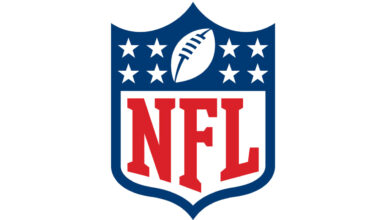The Rise of Girls Flag Football: Washington’s Historic Decision and What It Means for the Future of Women’s Sports

Key Takeaways
- Washington becomes the 15th state to officially sanction girls flag football as a high school sport, joining a rapidly growing national movement
- The Seattle Seahawks have been instrumental in supporting the sport through funding, tournaments, and infrastructure development
- Girls flag football is expanding beyond high school, with nearly 60 colleges and universities now offering women’s flag football programs
- Athletes report significant personal development benefits including increased confidence, community building, and leadership skills
- The sport breaks down traditional gender barriers in football, creating new pathways for female athletes both on and off the field
Introduction: A Historic Shift in High School Athletics
The landscape of high school sports in America is undergoing a significant transformation. As educational institutions increasingly recognize the need for diverse athletic opportunities that engage all students, girls flag football has emerged as one of the fastest-growing sports in the country. In a landmark decision that reflects this national momentum, the Washington Interscholastic Activities Association (WIAA) recently voted to officially sanction girls flag football as a high school sport, marking a pivotal moment for female athletes across the state.
This decision represents more than just the addition of another sporting option—it signifies a fundamental shift in how we approach gender equity in athletics and acknowledges the growing demand for inclusive sporting opportunities. With Washington joining fourteen other states in official sanctioning, girls flag football has reached a critical mass that suggests we may be witnessing the birth of what could become one of America’s most popular female high school sports.
The Growth Trajectory: From Grassroots to Official Recognition
The National Movement Gains Momentum
The journey of girls flag football from casual recreational activity to officially sanctioned high school sport illustrates how rapidly athletic paradigms can shift when properly supported. Washington now joins Alabama, Alaska, Arizona, California, Colorado, Florida, Georgia, Hawaii, Illinois, Mississippi, Nevada, New York, Pennsylvania, and Tennessee in officially recognizing the sport—creating a coalition of fifteen states that spans diverse geographic and demographic regions.
This widespread adoption suggests that the appeal of flag football transcends traditional regional sporting preferences. Unlike sports that may thrive primarily in specific parts of the country, flag football has demonstrated universal appeal, gaining traction in the South, West, Midwest, and Northeast almost simultaneously.
Professional Support Accelerates Development
One of the most notable aspects of girls flag football’s growth has been the significant involvement of NFL franchises in supporting local programs. In Washington, the Seattle Seahawks have played an instrumental role in nurturing the sport’s development. As Mario Bailey, Seahawks Vice President of Community Engagement & Legends, explained: “We believe that everyone should have the access and opportunity to play football, and the momentum we’ve seen for girls flag has been incredible. Sanctioning girls flag is an amazing step in giving these girls a new avenue to pursue playing flag football in college and beyond.”
The Seahawks’ support has taken multiple forms:
- Hosting championship tournaments that provide competitive opportunities
- Providing grant funding to girls flag teams within numerous school districts including Tacoma, Seattle Public Schools, Bellevue, Northshore, Auburn, Renton, Puyallup, Mercer Island, Federal Way, Highline, and Kent
- Creating visible recognition with a dedicated wall at Lumen Field titled “The Future of Football is Female,” featuring flags representing each high school with girls flag teams
This multi-faceted approach demonstrates how professional sports organizations can effectively nurture emerging sports at the grassroots level. By providing both financial resources and symbolic recognition, the Seahawks have created a sustainable model for development that other professional franchises might emulate across different sports.
Chuck Arnold, President of the Seahawks and First & Goal Inc., characterized the sanctioning as “a historic moment for our state and an exciting milestone for all the girls flag athletes in our region who now have the opportunity to play at the highest level.” This sentiment was echoed by Seahawks General Manager and President of Football Operations John Schneider, who remarked, “Amazing. It’s pretty cool to see Washington, the Seahawks, and the people upstairs do a great job getting out in the community and giving back.”
The Impact Beyond the Field: Personal and Social Benefits
Building Community and Confidence
While the institutional growth of girls flag football is impressive, the most compelling arguments for its continued expansion come from the athletes themselves. For many participants, the sport has become far more than just an athletic activity—it serves as a catalyst for personal growth and community building.
Mariah Jackson, a player from Stadium High School, offered a powerful testimonial to this effect: “Girls flag football has been a big part of my high school experience. It became more than just a sport to me. It’s a community where I found friendship, confidence and a deep love for competition. I love the energy of the game, the strategy and the feeling of pushing myself to be better every time I step on the field. Playing flag has given me a sense of belonging and has shown me the power of teamwork, resilience and passion. It’s not just a game, it’s a part of who I am.”
Jackson’s experience exemplifies the multidimensional benefits that well-structured athletic programs can provide. Beyond physical fitness, participants develop:
- Social connections and friendships that extend beyond the field
- Increased self-confidence and positive body image
- Strategic thinking and decision-making skills
- Resilience and perseverance through competitive challenges
- Team collaboration and leadership abilities
These outcomes align with extensive research showing that participation in organized sports significantly contributes to adolescent development, particularly for young women. A study published in the Journal of Physical Activity and Health found that female high school athletes reported higher levels of self-esteem and lower levels of depression compared to non-athletes. Additionally, the Women’s Sports Foundation has documented that girls who participate in sports are more likely to graduate from high school, achieve higher grades, and develop leadership skills that translate to other areas of life.
Breaking Down Traditional Barriers
Perhaps the most transformative aspect of girls flag football’s growth is how it challenges traditional gender segregation in one of America’s most culturally significant sports. Football has long been associated with masculinity in American culture, with limited opportunities for female participation beyond supporting roles. The emergence of flag football as a female-dominated sport creates new narratives around who “belongs” on the football field.
Justin Christiansen, head coach of Olympia High School girls flag football, articulated this significance: “Flag is important because it provides opportunities. Opportunities for those that either thought or were told that they would never be able to do it. Football in general was always a sport that excluded girls. Either it being a coach that didn’t want a girl on their team or parent that didn’t want their daughter to get hurt. Football has always been a game, and really the only game, for half a population. Flag football breaks down these barriers.”
By removing the physical contact element that has historically been used to justify female exclusion from the sport, flag football creates a version of the game that maintains its strategic complexity while making it accessible to all. This evolution mirrors similar transformations in other sports, where modified versions have created new avenues for participation across genders.
The Educational Impact: Academic Benefits and Student Engagement
Increasing School Attendance and Academic Performance
Beyond the social and developmental benefits, emerging research suggests that expanding athletic opportunities like girls flag football can positively impact educational outcomes. When students find engaging activities that connect them to their school community, attendance rates improve and academic performance often follows.
A landmark study by the National Federation of State High School Associations found that athletes had higher grade point averages, lower dropout rates, better daily attendance, and fewer disciplinary problems than non-athletes. By adding girls flag football to the roster of sanctioned sports, Washington schools are potentially creating another avenue to boost student engagement, particularly for students who might not have found their athletic niche in traditionally offered sports.
Expanding Leadership Development Opportunities
Sanctioned sports programs provide structured leadership development opportunities that extend beyond what’s available in the classroom. Team captains, position leaders, and even supporting players all experience situations that cultivate leadership skills including:
- Decision-making under pressure
- Conflict resolution among teammates
- Goal-setting and strategic planning
- Communication across different roles and responsibilities
- Accountability for individual and team performance
For young women in particular, these leadership opportunities can be transformative. Research from EY Women Athletes Business Network and espnW found that 94% of women in C-suite positions played competitive sports, with 52% having played at the university level. By expanding access to sports like flag football, educational institutions are effectively creating leadership development pipelines that will benefit their students throughout their professional lives.
The Collegiate Pathway: New Opportunities for Higher Education
Growth in Collegiate Programs
One of the most exciting developments for high school flag football athletes is the rapid expansion of collegiate opportunities. Currently, women’s flag football is offered at nearly 60 colleges and universities across the NCAA, NAIA, and NJCAA. This growth creates a clear pathway from high school to collegiate athletics that previously didn’t exist.
The NAIA has been particularly proactive in embracing women’s flag football, working with the NFL to develop the sport at the collegiate level. This partnership has accelerated the creation of varsity programs and scholarship opportunities. For many female athletes who might not have seen themselves pursuing college athletics, flag football opens new doors for both athletic and academic advancement.
Scholarship and Financial Aid Implications
The expansion of collegiate flag football programs has significant financial implications for student-athletes. As more institutions add varsity programs, scholarship opportunities increase, potentially making higher education more accessible for talented players. While most programs are still in development and may not offer full scholarships comparable to established sports, the trajectory suggests growing financial support for female flag football athletes.
This development is particularly significant given concerns about the accessibility of higher education. Athletic scholarships can provide crucial financial support for students who might otherwise struggle to afford college, making girls flag football not just a sporting opportunity but potentially a pathway to educational advancement.
The Economic Perspective: Growth Potential and Industry Impact
Market Expansion for Sporting Goods and Equipment
The sanctioning of girls flag football across fifteen states represents a significant market expansion opportunity for sporting goods manufacturers and retailers. As participation increases, demand grows for:
- Specialized flag football equipment
- Team uniforms and practice gear
- Training aids and instructional materials
- Event infrastructure for tournaments and competitions
Major sporting goods companies have already begun developing product lines specifically for female flag football players, recognizing the distinct equipment needs and preferences of this growing market segment. This trend illustrates how expanding athletic opportunities for women creates tangible economic benefits beyond the playing field.
Event Management and Tourism Opportunities
As the sport grows, regional and national tournaments will likely increase in both frequency and scale. These events generate significant economic activity for host communities through:
- Hotel bookings for teams and spectators
- Restaurant and retail spending
- Transportation services
- Venue rental and staffing
- Tournament administration and officiating
Communities that position themselves as hubs for girls flag football competitions can potentially capture substantial tourism revenue, particularly during traditional off-season periods for other sports. This economic incentive provides another compelling reason for states and municipalities to support the sport’s development.
The Future Landscape: Projections and Possibilities
Additional State Sanctioning on the Horizon
With fifteen states now officially sanctioning girls flag football, momentum suggests that additional states will follow suit in the coming years. Several factors indicate potential for continued expansion:
- The success of existing programs in diverse geographic regions
- Continued support from NFL franchises in multiple markets
- Growing recognition of the sport’s benefits for student-athletes
- Increased media coverage and visibility for competitions
- The trend toward greater gender equity in athletic opportunities
States with strong football cultures but lacking current sanctioning, such as Texas, Michigan, and Ohio, represent particularly promising markets for expansion. Additionally, states with active NFL franchises that could provide similar support to what the Seahawks have offered in Washington may be well-positioned for growth.
International Growth and Olympic Potential
The rise of girls flag football in American high schools coincides with international growth in the sport. Flag football has been gaining traction globally and is being considered for inclusion in future Olympic Games. This international dimension creates additional pathways for talented athletes, potentially extending competitive opportunities well beyond high school and collegiate play.
Should flag football achieve Olympic status, the early investment in high school programs would position American athletes advantageously on the world stage. This potential represents yet another reason why the Washington decision has implications that extend far beyond state boundaries.
Implementing Successful Programs: Best Practices and Considerations
Coaching Development and Staffing
One of the challenges in rapidly expanding a relatively new sport is developing qualified coaching staff. Successful implementation of girls flag football programs requires investment in:
- Coach recruitment and training programs
- Officiating development and certification
- Administrative support for new athletic offerings
- Medical staff familiar with sport-specific injury patterns
Schools and athletic associations implementing new flag football programs should consider partnerships with local football organizations, NFL franchises where available, and experienced flag football coaches to develop comprehensive training programs for new coaches.
Infrastructure and Facility Planning
While flag football requires less specialized equipment than tackle football, schools still need appropriate facilities for practice and competition. Program planners should consider:
- Field availability and scheduling across multiple sports
- Appropriate field markings and dimensions
- Storage for specialized equipment
- Spectator accommodation for competitions
- Potential for weather disruptions and indoor alternatives
Creative solutions, such as converting existing fields to multi-use configurations or developing partnerships with community facilities, can help address these needs even with limited resources.
Conclusion: A Transformation Beyond the Sport
The Washington Interscholastic Activities Association’s decision to sanction girls flag football represents far more than the addition of another sporting option—it signals a fundamental shift in how we approach gender equity in athletics and responds to growing demand for inclusive sporting opportunities. As the fifteenth state to take this step, Washington contributes to a national momentum that is transforming athletic landscapes across the country.
The growth of girls flag football demonstrates how quickly change can occur when institutional support aligns with athlete interest. From the professional advocacy of organizations like the Seattle Seahawks to the passionate testimony of players like Mariah Jackson, multiple stakeholders have collaborated to create a new sporting pathway with benefits that extend far beyond the field.
As this trend continues, we can anticipate further expansion of girls flag football across additional states, continued growth in collegiate opportunities, and potentially international recognition. For athletic directors, educational administrators, parents, and athletes themselves, this evolution represents an exciting opportunity to participate in the early stages of what may become one of America’s most significant women’s sports.
The transformation underway in Washington and fourteen other states isn’t just changing who plays football—it’s changing our fundamental understanding of which sports belong to whom, and in doing so, creating new possibilities for athletes across gender lines.
YSBR provides this content on an “as is” basis without any warranties, express or implied. We do not assume responsibility for the accuracy, completeness, legality, reliability, or use of the information, including any images, videos, or licenses associated with this article. For any concerns, including copyright issues or complaints, please contact YSBR directly.
via: Seahawks
Source link




